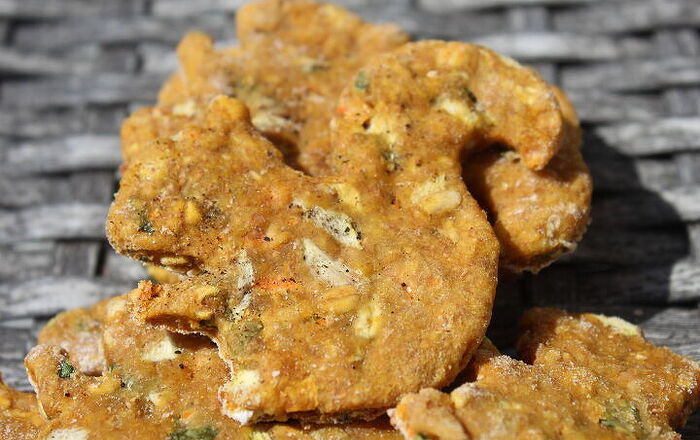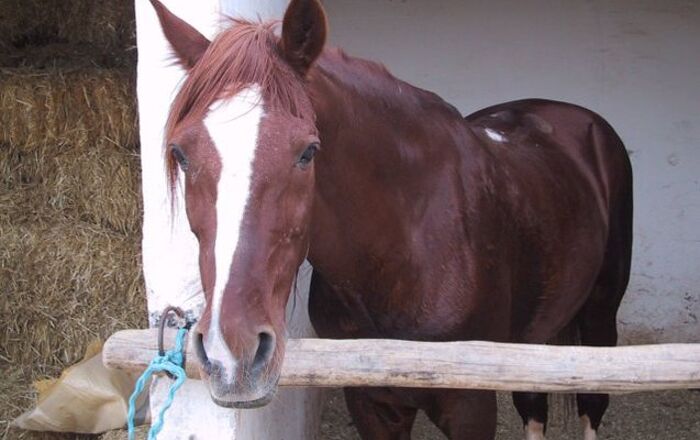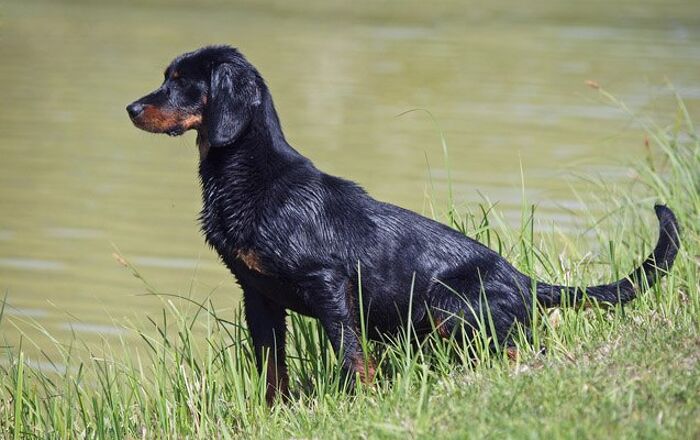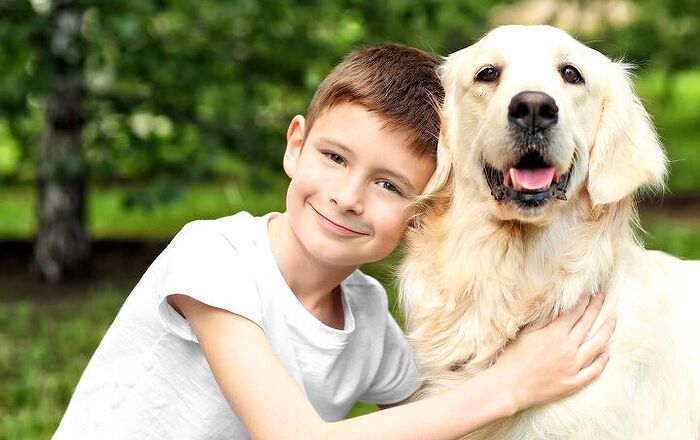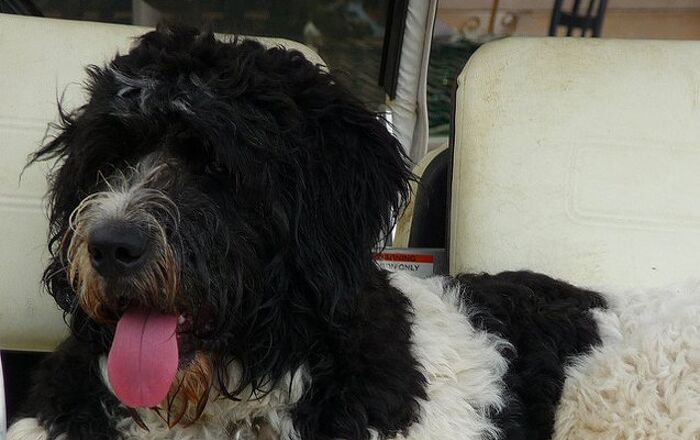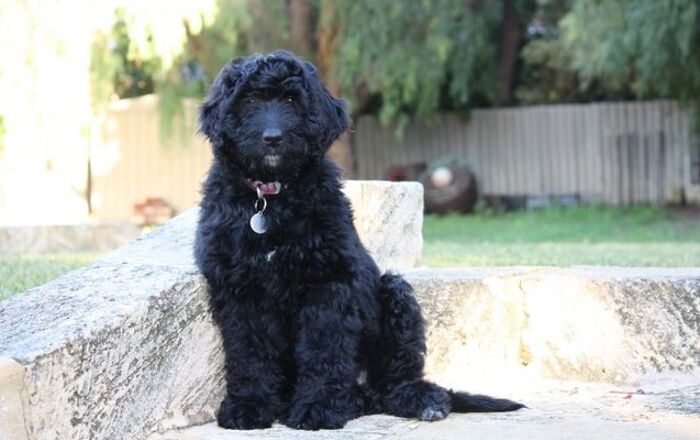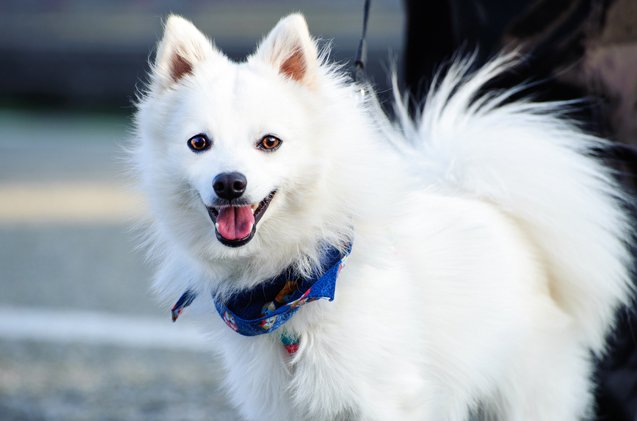
Japanese Spitz Basics
Imagine a small white dog with a thick white coat and a fluffy tail – that is the image of a Japanese Spitz. These little dogs are the ideal companion pet, often compared to the white Pomeranian. Japanese Spitz dogs are known for being active and loyal companions who become very devoted to their owners. What makes the Japanese Spitz such a great pet is the fact that this breed simply craves human attention. These little dogs will not be content to sit back and watch family activities – they want to be part of the action!
Even though this is a fairly recent and rare breed, Japanese Spitz is a highly sought-after dog. The main reason for this is their winning combination of adorable, fluffy looks and a wonderful personality. These dogs are particularly recommended for families with children and for seniors looking for a low-maintenance pet. Japanese Spitz is also a fantastic choice for people living in an apartment, due to its compact size and minimal exercise needs.
Imagine a small white dog with a thick white coat and a fluffy tail – that is the image of a Japanese Spitz.
Origin
The Japanese Spitz was developed in Japan during the 1920s and 30s by crossbreeding several Spitz-type breeds. It is thought that the breed started with German Spitz dogs bred to various small white Spitz-type breeds that were imported from around the world. The goal of the breeders was to produce a dog that would sport an attractive coat and have a personality that makes him a good companion for families.
The first Standard for the breed wasn’t published in Japan until after World War II, after which point the breed began to gain popularity throughout Japan and into England. In 1977, the Japanese Spitz was accepted as a member of the Utility Group by the Kennel Club but it remains unrecognized by the AKC. But even so, there are many breed enthusiasts all around the world. In the UK, the Northern Japanese Spitz Club is the largest organization devoted to this unique breed, and helps unite all the owners and future owners who are in need of information about these rare dogs.
Pedigree
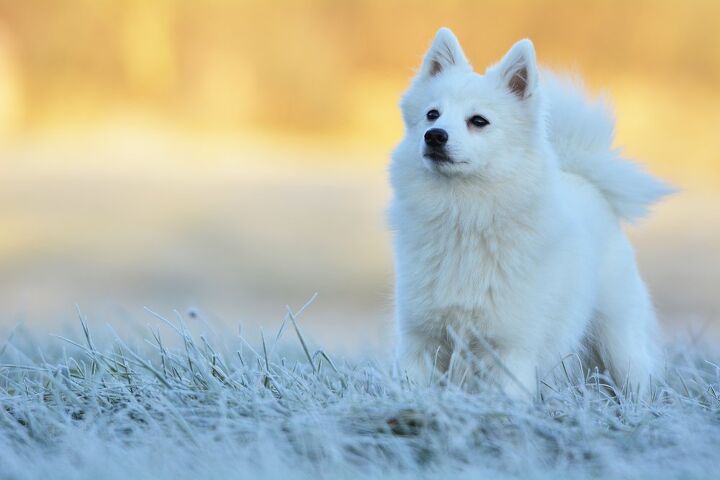
The Japanese Spitz breed was developed by crossing several Spitz-type breeds together, including the German Spitz. After years of development, these Japanese breeders managed to create a standard for the small, white dog people now know and love. However, even though fairly popular throughout the world, these dogs are not so well-known in the United States. The main reason is their similarity to various other Spitz-type breeds, including the American Eskimo, which is also why they’re not recognized by the American Kennel Club.
In the US, smaller clubs recognize this breed, including American Canine Registry, American Canine Association, American Pet Registry, and Dog Registry of America. Even so, this will mean that your new puppy can’t have an official pedigree- as Japanese Spitz is not eligible for registration with the AKC.
Across the world, most national clubs recognize these dogs, from UK’s Kennel Club to Canadian Kennel Club and Fédération Cynologique Internationale.
Food/Diet
All dogs need a well-balanced, healthy diet to thrive and the Japanese Spitz is no different. Most experts agree that dry food has the most benefits for dogs, and the convenient form and ease of availability make it the most appealing option for owners, too. Naturally, not all dry foods are the same and not all of them will be a good choice for the Japanese Spitz.
Choose only premium quality kibble that’s made from high-grade, healthy ingredients and that is suitable for your dog’s age (puppy, adult, senior), size, and activity levels (mixes for small breed dogs usually cover for both). From time to time you can use kibble toppers such as wet canned food or cooked light meat with dog-safe veggies, but don’t go overboard.
Japanese Spitz is a compact canine and will gain weight quickly. To prevent obesity, follow the serving size recommendations- usually, a cup to cup and a half of kibble are enough for a dog of this size. Additionally, you shouldn’t free feed your pet, but rather split their daily dose of food into two separate meals.
Japanese Spitz dogs are very intelligent and eager to please which makes them very adaptable to training.
Training
Japanese Spitz dogs are very intelligent and eager to please which makes them very adaptable to training. The key is to start training your dog early and to maintain consistency so your dog learns quickly and remembers your commands. In addition to obedience training, the Japanese Spitz is also a good candidate for agility training and various dog sports including Flyball.
Like many small breeds, the Japanese Spitz is prone to developing behavioral problems if not properly trained or exercised. Training does more than just ensure that your dog follows your commands – it also gives your dog mental exercise to stave off boredom. If your dog becomes bored, he is more likely to develop behavioral problems like digging and chewing. The Japanese Spitz in particular is said to be a big dog in a little dog’s body, so training is essential to keep your dog’s big personality under control.
Weight
The average weight of this breed is 11 to 20 lbs. (5-10kg). This places the Japanese Spitz somewhere in between small and medium. Either way, these are not large dogs, and won’t require all that much space to be happy. Of course, to maintain this weight within healthy limits, you will need to ensure a balanced and healthy diet. Without it, a Japanese Spitz might develop obesity, or become chubby. Not only will this mar their looks, but it can also create a slew of health issues as well. Just remember that moderation, balance, and plenty of exercise will keep your pet in top notch shape.
Temperament/Behavior
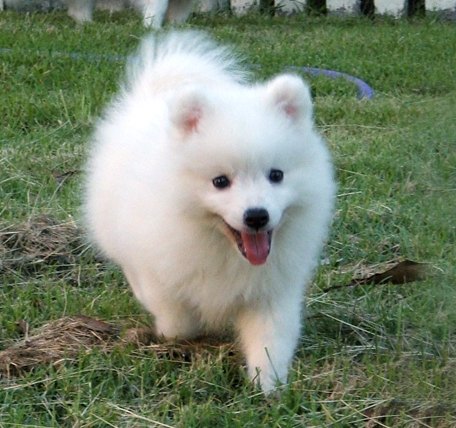
The Japanese Spitz is a smart and loyal breed that gets along very well with children. However, even though these petite pooches will have patience with kids, make sure to your young ones how to behave around dogs: rough play could injure fragile Japanese Spitz puppies and pulling hair or being mean to a mature dog could lead to them developing behavioral issues.
With proper training and socialization, though, Japanese Spitz is a fantastic companion. These little dogs crave human affection and will do anything they can to be included in family activities. Japanese Spitz dogs also make great watchdogs because they tend to bark when a stranger comes near, though they are quick to warm up to people when properly introduced. So, you might know when a stranger is coming by, but don’t count on your ball of fluff to do anything about it- they would probably make friends with a burglar!
Japanese Spitz dogs are active and playful which makes them ideal for active singles and families. If you are looking for a dog that will run and play with you outside, the Japanese Spitz will definitely fill that need. These dogs can be a little dominant or independent at times, but they can be very obedient with proper training.
Common Health Problems
Responsible breeding practices can limit the occurrence of major health problems in this breed but some of the most common issues include patellar luxation and runny eyes or tear staining. Runny eyes are often caused by stress or allergies and can easily be treated by bathing the eye in warm water. What is more, tear staining can often be remedied by professional groomers! Patellar luxation on the other hand, is a more serious issue that will require professional health care. Of course, there are things you can do to keep this issue at bay. For example, you should always strive to keep your pet’s weight balanced and light. Overweight dogs are more prone to have joint and ankle issues due to increased pressure. If you notice swelling in the legs, limping, pain, abnormal carrying, or refusal to exercise or jump, these all may be the signs of patellar luxation. After treatment, you will need to take slow recovery. But this all tells you that exercise and a healthy life are very important for your dog.
Life Expectancy
The life expectancy of the Japanese Spitz breed is about 12-14 years. If we consider that the maximum average lifespan for most dogs is fifteen years, we can see that the Japanese Spitz is quite a long-lived breed! If you show them ample care and love, they are bound to stay by your side for quite a long period of your life. And if you take into account their lovely character traits, you can see that they are the perfect companion dogs and four-legged friends.
Exercise Requirements
These little dogs are full of energy and can be very active. This being the case, you need to take your Japanese Spitz for a long walk on a daily basis. Anywhere from 30 to 60 minutes of daily exercise will be mandatory. They will love to go to dog parks for some furry friendly time or run around and fetch in a securely fenced backyard. Needless to say, their activity needs make Japanese Spitz is a lovely choice for a family living in a home with a yard. Just make sure that everything is fenced-in and as safe as possible. You wouldn’t want your curious doggo eloping on a dangerous quest!
As long as your dog gets enough exercise, however, he will be perfectly happy living in an apartment or a house with limited outdoor space. It’s the willingness of the owner to provide exercise that counts- not enough space for them to be active on their own. Just make a great daily routine and all will be well. A daily walk to the park or around the block will benefit both you and your dog – this light exercise will work to make both pet and owner happy and healthy.
These little dogs crave human affection and will do anything they can to be included in family activities.
AKC
The Japanese Spitz is not recognized by the American Kennel Club. The reason is its similarity to the white Pomeranian as well as the Samoyed and the American Eskimo Dog.
Coat
The coat of the Japanese Spitz is its most recognizable feature – it is white and plush, forming a thick mane around the neck. The fur on the lower legs is shorter, but the tail is well-furred and is carried curled over the back. Due to the thickness of this breed’s double coat, regular brushing and grooming is necessary to keep the coat healthy and to reduce shedding. You should establish a practice to brush lightly a few times per week, and to take your pet to the grooming salon at least once per month. An occasional bath is also recommended! This way the shiny white coat of your Japanese Spitz can remain elegant and silky all the time. If you neglect their hygiene, some of that lustrous white shine might be lost!
Puppies
Japanese Spitz puppies can be quite a handful since this breed is naturally active and energetic. It is important to start training your puppy early so your dog doesn’t develop Small Dog Syndrome. Early training is also the key to ensuring that your puppy grows up to be obedient to your commands. Proper socialization is also important as it prevents dominant behavior towards other dogs and that encourages friendliness to people.
Photo credit: Kimyata/Wikimedia; beeboys/Shutterstock; Jost Stergarsek/Shutterstock






